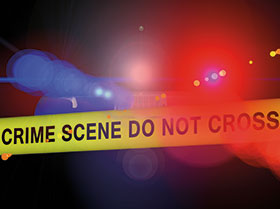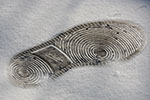

This section relates to the aftermath of a crime having been committed and addresses the management of a crime scene(s). The reason for considering crime scenes is that there may more than one scene for any crime and all of them will need managing individually.

For example, imagine that a house is burgled and a car is stolen from the garage. The car is tracked and later stopped by police and the suspects arrested. The police investigators will treat the house, the car and each of the suspects as separate crime scenes – yes, people can be crime scenes as they will almost always have evidence on them to connect them with the crime.
All crimes against people and their property affect victims in a variety of ways, be it physically, financially or emotionally. When such crimes, particularly violent crimes, occur in a home environment, the effects can be some of the most devastating.
A common, understandable and indeed desirable, response is to get back to normal, or as near to normal as soon as possible. However, if not carefully managed, such actions could inadvertently prolong the recovery period.
Therefore, it is important to consider the immediate actions at the scene of a crime in order to minimise the effects of the incident and enable those affected by it to return to as near-as-normal activities as soon as possible.
If you look at any crime scene, there are three fundamental aims that should always be in everyone’s mind. They are, in order of priority:
• Safety – save life and treat the injured.
• Security – safeguard property and preserve evidence.
• Stability – clean-up, support and recovery.
Safety
There can be no greater priority at any crime scene than saving lives and treating the injured – which includes people and other members of a family, such as pets.
This starts with ensuring that no person is in danger, calling for help (e.g. people nearby, neighbours, security and emergency services), and then providing whatever assistance you can, within the scope of your personal knowledge and capabilities.
Where possible, less seriously injured persons should be moved away from the scene to a more appropriate nearby location. This will assist people providing first aid to more seriously injured people, will be easier to provide both treatment and support to the person and reduce the possibility of destroying evidence at the scene.
Therefore, in the very initial stage at the scene of a crime, the only people that need to be at an actual crime scene are likely to be:
• Victims in need of immediate first aid.
• First aiders and emergency paramedics.
• Security supervisor and/or police officer.
If a property-owner or an immediate family member arrives at the scene during this early stage they must be treated with a great deal of care and compassion. It is important that they are allowed access to a victim as soon as possible, provided that this will not affect any urgent medical treatment that is taking place.
Once the safety of all people has been established, only those people required at the scene should remain so that it can be effectively secured, which is the next stage.
Security
Once the safety of all persons has been assured and first aid treatment administered, the next aim is to secure the crime scene to safeguard property and preserve evidence to aid an investigation and the identification of those responsible.
The purpose of crime scene investigation is to help establish what happened (to reconstruct the crime scene) and to identify the responsible person. This is done by carefully documenting the conditions at a crime scene and recognising all relevant physical evidence. The ability to recognise and properly collect physical evidence is often critical to both solving and prosecuting crimes, particularly violent crimes. It is no exaggeration to say that in the majority of cases, the careful preservation of a crime scene and a methodical examination by a specialist crime scene examiner can be critical to solving violent crimes.
In order to achieve this, first you must establish the extent of the crime scene, or scenes, in the area. Asking the following questions will often provide sufficient information for the initial investigator and ensure that the crime scene can be properly identified:
• How did the intruder get to the premises, route taken and vehicle used?
• Where and how did the intruder get into the premises?
• Where and how did the intruder get out?
• Where has the intruder been inside and outside the premises?
• What has the intruder taken?
• When did it happen?
• When was the crime discovered?
• Did anyone see the intruder?
Important points to remember are:
• An area should always be treated as a crime scene until decided otherwise.
• The scene should be cordoned off as widely as is reasonably possible.
This is vital to ensure that by managing all relevant areas, people do not have the opportunity to steal items or to remove or destroy evidence in order to prevent suspects being identified.

Evidence is not always visible (such as fingerprints or footprints) and can only be preserved by effective scene management, including applying the following basic rules:
• Minimise access to the entire area.
• Do not walk in the cordoned-off area.
• Avoid touching or handling anything.
• Do not clean anything.
• Do not throw anything away.
This can often be best achieved by making scene preservation the specific role of one person: a family member or friend, a security officer or a police officer.
Keep a record of all persons entering and leaving the cordoned off area and the scene, their purpose and any action(s) taken by them.
Scene preservation should be maintained until fully examined by a police crime scene investigator or until advised by the most senior police officer present.
Stability
Only once it is possible to re-enter the scene, can the clear-up operation begin. This can be a lengthy and sometimes traumatic process and so careful consideration should be given to when this process is undertaken and who are the most appropriate people to complete it.
One important aspect which can normally only be completed by someone with knowledge of the premises is the securing of valuable property. Fleeing suspects often drop property while escaping from a crime scene and even overlook valuable property during their haste to commit the crime. It is therefore vitally important that such property is secured, particularly if it may not be able to fully secure premises for some time or even overnight.
Thereafter, arrangements can be made to secure the premises, whether permanently or temporarily, by ensuring that doors and windows are boarded-up or otherwise repaired or replaced and adequate locks are in place.
Suspects are usually in a rush when committing crimes and so scenes are often left very untidy. In cases of violent crime, there may also be blood stains to contend with. Additionally, the use of fingerprint powders and other specialist processes will add to the requirement for a thorough cleaning and tidying process to be undertaken.
Where blood and other bodily fluids require cleaning, it is strongly recommended that specialist crime scene cleaners are used. Not only will this ensure that health and safety is not compromised, but they are also expert at ensuring that the cleaning is done to the highest possible standards and that residual damage to property is minimised.
Once the scene has been thoroughly cleaned and tidied, only then will it be possible to fully assess what property should be replaced and what additional security measures should be considered to prevent a possible reoccurrence of the crime.
All victims of crime, and other persons affected by it, including relatives, neighbours and friends, will have their own individual responses and coping mechanisms which need to be taken into account, particularly in cases of violent crime.
Therefore, it is vital that people are conscious of the potential effects, which can be very varied but often include changes in what might be termed ‘normal behaviour’. In order to minimise the traumatic effects that crime has on people and support their recovery, it is recommended that consideration is given to seeking the assistance of victim support groups or other similar organisations. In instances of violent crimes, Post-Traumatic Stress Disorder (PTSD) is common and it is further recommended that medical advice is sought at the earliest opportunity.
Aide-Memoire
The following simple Aide-Memoire has been developed to assist in a case of emergency:
Initial actions at the scene of a crime
Safety
The most import things to remember are saving life and treating the injured.
Security
Once this has been achieved, the next aim is to secure the crime scene to safeguard property and preserve evidence to aid an investigation and the identification of those responsible.
• An area should always be treated as a crime scene until decided otherwise.
• The scene should be cordoned off as widely as is reasonably possible.
• Evidence is not always visible and can only be preserved by effective scene management, including applying the following basic rules.
– Minimise access to the entire area.
– Do not walk in the cordoned off area.
– Avoid touching or handling anything.
– Do not clean anything.
– Do not throw anything away.
This can be best achieved by making scene preservation the specific role of one person: a family member or friend, a security officer or a police officer.
Keep a record of all persons entering and leaving the cordoned off area and the scene, their purpose and any action(s) taken by them.
Scene preservation should be maintained until fully examined by a police crime scene investigator or advised by the most senior police officer present.
Stability
Once it is possible to re-enter the scene, the clear-up operation can begin, including:
• Securing valuable property.
• Arranging to secure the premises, replacing and repairing doors, windows and locks.
• Calling in specialist cleaners, or removing items that require specialised cleaning or disposal.
• Cleaning and tidying other items of property and marks left during the crime scene examination.
• Replacing or repairing missing or damaged items.
During this time, it is vital to support the victims and others affected by the crime and start their individual process of recovery.
For more information, contact Dave Dodge, chairman@instituteofsecurity.co.za, or Rosemary Cowan, sais@instituteofsecurity.co.za, +27 (0)11 455 3157, www.instituteofsecurity.co.za

© Technews Publishing (Pty) Ltd. | All Rights Reserved.